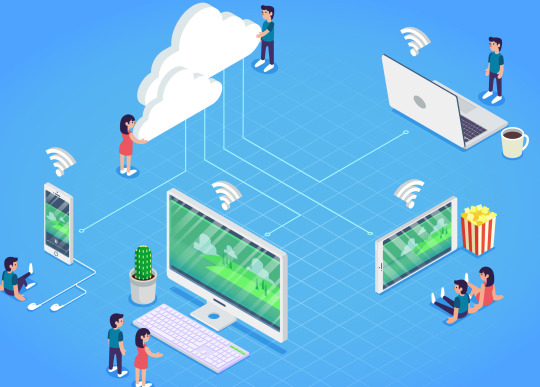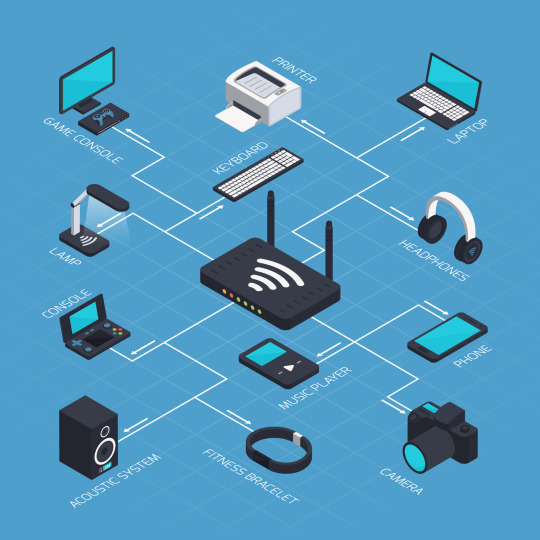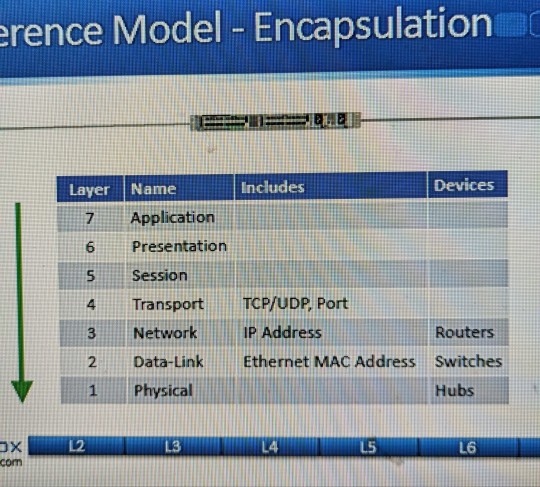#Computer networking
Explore tagged Tumblr posts
Text







The Matrix (1999)
#the matrix#heart of the city#cyberpunk aesthetic#cyberpunk movies#simulation#computer simulation#scifi#virtual reality#computer networking#gifs#gifset#movies#cyberpunk#scifi gif#cyberpunk gif#trinity#movie edit#carrie anne moss#scifi aesthetic#rooftop
453 notes
·
View notes
Text
OTD: 5 May
51 years ago today, the first paper describing Transmission Control Protocol (TCP) was published. TCP is one of the foundational protocols of the Internet, along with IP, UDP, DNS, and HTTP.
Here's a link to a PDF of Cerf and Kahn's original paper, which appeared in the IEEE Transactions on Communications, 5 May 1974:
#ieee#computer history#internet#tcp#1970s#vint cerf#otd#darpa#stanford university#computer networking#documentation
6 notes
·
View notes
Text


MINITEL FRANCE LOW BANDWIDTH INTERNET 1984-2012
in 1985 if you had this, metal hurlant and mtv you were all set
6 notes
·
View notes
Text
Bro I’m gonna have a fucking conniption over my cnap class
This fucking teacher has done fuck all but assign us work and tell us to do our dual enrollment work.
THEY HAVE NOT FUCKING ONCE TOLD US HOW TO DO SAID WORK!!!
THEN THEY JUST SAY “aSk YoUr ClAsSmAtEs FoR hElP” MOTHERFUCKER THEY DONT KNOW IT EITHER
TAKE YOUR HEAD OUT OF YOUR ASS AND TEACH US SOMETHING INSTEAD OF BRINGING IN SOME DICKHEAD TO HAVE A NETWORKING OPPORTUNITY
FUCK SAKE
5 notes
·
View notes
Text
Computer Networking gives you so many good fantasy names. I'm naming my next character VLAN
11 notes
·
View notes
Text
Computer Networks: Basics, Types, and Benefits Explained
Computer networks are a big part of today’s highly automated world. They connect people, systems, and devices, making communication and resource sharing effortless. Whether it’s examining the internet, collaborating on projects, or sharing files, computer networks play a vital role in both personal and professional environments. We’ll cover the basics of computer networks, discuss their different types, and see the benefits they deliver.

What is a Computer Network?
A computer network is basically a system where multiple devices are linked together to share resources and exchange data. These devices can include laptops, mobile phones, servers, and networking equipment like routers. Networks enable smooth communication and allow devices to work together efficiently, making everything from browsing the web to managing complex business operations much easier.
Types of Computer Networks
Personal Area Network (PAN):
Personal Area Networks are designed as small networks intended for individual purposes. They usually span a limited distance and link devices such as.
smartphones, laptops, and tablets. For instance, connecting your phone to your computer via Bluetooth forms a simple PAN.
Local Area Network (LAN):
LANs are commonly used in homes, schools, and offices to connect devices within a limited area. For example, to allow employees to share files and printers seamlessly, all the computers in an office might be connected to a LAN.
Wide Area Network (WAN):
A WAN stretches over a significantly larger territory, often connecting devices or LANs across cities, countries, or even continents. The internet is the most well-known example of a WAN, authorized global connectivity.
Metropolitan Area Network (MAN):
Sitting between LANs and WANs, a MAN is typically used to connect networks across a campus or city. Cable TV networks are a common example of a MAN.
Wireless Networks:
Wireless networks use technologies like Bluetooth or Wi-Fi to connect devices without cables. They’re widely used in offices, homes, and public places, offering convenience and mobility.
Key Components of Computer Networks
Devices (Nodes): Servers that interact within the network these include computers and smartphones.
Connections (Links): The physical or wireless pathways that transfer data between devices.
Protocols: These are the rules that control data transmission, such as TCP/IP, to maintain smooth communication.
Switches and Routers: Switches connect devices in a network, while routers link different networks together.

Benefits of Computer Networks
Resource Sharing:
Networks make things easy to share like files, printers, and software applications, reducing the need for duplicate resources.
Seamless Communication:
With instant messaging, email, and video calls, networks ensure quick and authentic communication, no matter how far away are you.
Cost Savings:
By collecting resources and data storage, networks cut down on operational costs, especially for businesses.
Anywhere Access:
Modern networks allow you to access data from any connected device, whether you are at home or on the go.
Scalability:
As your needs develop networks will grow too, by supporting more users and devices over time.
Increased Productivity:
It reduces delays in automated processes and real-time data sharing and streamlines workflows, boosting efficiency.
Why Computer Network Skills Are Crucial for Entry-Level Corporate Roles
For those starting their careers, knowledge of computer networks can be a significant asset:
Essential for Office Environments:
In today's world, most workplaces rely on LANs and WANs for everyday operations. Knowing how these networks function allows employees to balance basic connectivity issues, making sure work stays on track without interruptions.
Supports Collaboration Tools:
Corporate tools like Microsoft Teams, Slack, and cloud-based systems depend heavily on networks. Understanding their underlying principles helps entry-level employees adapt quickly to these platforms.
Enhances Problem-Solving Skills:
Entry-level employees with networking knowledge can help IT, teams, by identifying and resolving minor network problems, exhibiting their value early on.
Boosts Technical Proficiency:
Networking skills indicate a candidate’s technical potential, giving them a head start in industries where tech literacy is required.
Prepares for Future Roles:
As technology makes progress, advanced networking concepts like cybersecurity and IoT integration are becoming integral. Early experience with networks lays a strong beginning for growth in these areas.
Challenges of Computer Networks
Security Risks: Networks are at risk of threats like hacking and malware, requiring robust security measures.
Cost of Setup: High-quality network infrastructure can be costly to install and maintain.
Technical Complexity: Balancing and managing networks frequently need specialized skills.
Conclusion
Computer networks are essential in today’s globalized world. From pushing day-to-day operations in businesses to enabling global communication, their impact is wide-ranging. For aspiring professionals, having computer networking skills can provide a competitive advantage, especially in entry-level corporate roles where technical knowledge is highly valued. By understanding the basics of networks and their benefits, individuals, and organizations can unlock new levels of productiveness and innovation.
I mastered Computer Network at NIPSTec, which is renowned as the best Computer Network institute in Delhi. If you're in Delhi and looking for top-notch training in computer networks, visit NIPSTec for expert guidance and practical learning.
2 notes
·
View notes
Text
Dante's Inferno but it's the 7 layers of the OSI model

35 notes
·
View notes
Text
"It's for reference, not reverence" goes so hard that I wish I could tell you it wasn't from a computer networking class on LinkedIn
3 notes
·
View notes
Text
books i want to read
Hands-on networking with Internet technologies / Douglas E. Comer ; Web site by W. David Laverell.
Comer, Douglas; Laverell, W. David
©2005
Fundamentals of game design / Ernest Adams, Andrew Rollings.
Adams, Ernest (Ernest W.); Rollings, Andrew, 1972-
©2010
2 notes
·
View notes
Text




The Matrix (1999)
#the matrix#cyberpunk aesthetic#cyberpunk movies#simulation#computer simulation#scifi#virtual reality#computer networking#gifs#gifset#movies#cyberpunk#scifi gif#cyberpunk gif#trinity#movie edit#carrie anne moss#scifi aesthetic#rooftop#keanu reeves
645 notes
·
View notes
Text
Port numbers be like 4343, 300, 70000000100000002, 5.
6 notes
·
View notes
Text
robotgirls that communicate via a custom application layer protocol that they designed together
1 note
·
View note
Text
Internet History Part 1
1 note
·
View note
Text

I'm over here in the peninsular Land of Flowers crafting runes and practicing my inscriptions in my spare time
you can't tell me this isn't wizardry
[image description] an incomplete and probably incorrect diagram depicting two switches being cabled to, from top to bottom, a management switch (above them), three sets of 4 devices (below them), each set in its own light blue rectangle. At the bottom is a large orange rectangle with 10 total devices, not all of which are connected to anything. Overall, the connections and shapes resemble an intricate magic rune[/image description]
(this is 3 total switches, 3 servers, and a storage device at the bottom) (I'm going to emulate the pair of servers at the top and create a mock config because I need the practice.
7 notes
·
View notes
Text
I'm reading this and it seems so familiar....
Oh, yeah: network handshaking protocols.
im reading a lot of research about the mycorrhizal network because this is a HUGE emerging area of research and there is so much new stuff coming out its sooooo neat
So basically "the mycorrhizal network is how trees send each other nutrients and help each other" is wrong,
but the main reason people were mad at it—because they thought everything in the ecosystem is selfish and competitive acting for its own interests—is much wronger.
How come?
Well...fungi aren't just a postal service for trees. They have lives of their own! Plants aren't just controlling the mycorrhizal network to send nutrients where they want, they are communicating with the fungus and negotiating the terms of that relationship.
The genetic basis in plants for forming the mycorrhizal symbiosis is old. REALLY old. Like, "before plants even came onto land" OLD. Other forms of symbiosis, like what legumes have going on with the Rhizobia, are using the same genes to do their thing. There's a LOT of genes involved with creating the symbiosis, including some redundancies just to be safe, and we're only just now starting to understand them.
Why so many genes? What are all these genes for? Everything! Communication chemicals, hormones the other partner will respond to, flipping switches in the other partner's genes. There was a lot of arguing over which partner, the plant or the fungus, was "controlling" the partnership, but this question turned out to be total nonsense. Both symbionts have to recognize each other, respond to each other, prepare for symbiosis by adjusting how their genes are expressed, form the symbiosis, and continuously negotiate the relationship by exchanging chemical signals. Both can actively select the partner that offers the best benefits. There's even experiments where it's been shown that if the fungus turns parasitic, the plant will start secreting fungicidal chemicals. (But also the mutualist fungi in the experiment outcompeted the parasitic one when the pots were seeded with both.)
Mycorrhizal symbiosis is an incredibly intimate relationship. Like, the fungus produces special organs that literally grow inside the plant's cells, and the plant is actively participating in allowing this to happen. The plants and fungi have genes for hormones used by the other species, they have soooooo much stuff encoded in their DNA for interacting with their symbionts, it's like, blurring the lines for whether they're even separate organisms. There are SO many chemicals involved in communication between them and we only understand a few of those chemicals.
This is SO MUCH COOLER than if the plants were just using the fungus as a passive conduit to communicate with and support each other. The fungus is actively participating!
We were fools and assumed there had to be one partner that was "in control," but both plant AND fungus have to initiate and to some extent they're each engaging on their own terms! Or maybe it's better to think of them as one and the same organism?
We're also finding out that there's a lot more types of mycorrhizal symbiosis than we thought (at least five) and a lot more variety in how it works.
And that's not even getting into fungal endosymbionts—fungi that live inside plant cells completely instead of having part of them be outside and in the soil. They aren't considered mycorrhizae because they're fully inside the plant cells and not connected with any soil fungi network but they do a lot of complicated things we don't understand and interact with the plant's other symbionts.
Fungal endosymbionts produce a lot of chemicals that are useful to the plants in some way, and it turns out, that a lot of them kill cancer. Seriously, we've gotten a LOT of anti-cancer drugs from these guys. I think it's because they have to bypass the plant's immune system, but they also fight each other/other little guys that get inside plant cells, so they kind of...are part of the plant's immune system?
And what's MORE
Is that plants and fungus aren't the only things part of this system! There's also bacteria that are symbiotic with the plants and fungi! Even the endosymbiont fungi have bacteria that are endosymbionts inside THEM. Double endosymbiosis.
I think I read one paper saying the bacteria use the fungi to get around? Like that's how Rhizobia find their way to the legume roots in the first place? Have to double check that one
#PS#this is *fascinating*#thank you very much op!#plants#fungi#nature#science!#network protocols#computer networking#science analogies
7K notes
·
View notes
Text
In today’s fast-paced digital landscape, staying ahead means more than just knowing the basics. Whether you're a tech enthusiast, a student preparing for competitive exams, or a professional looking to upskill, it's essential to dive deeper into.
0 notes